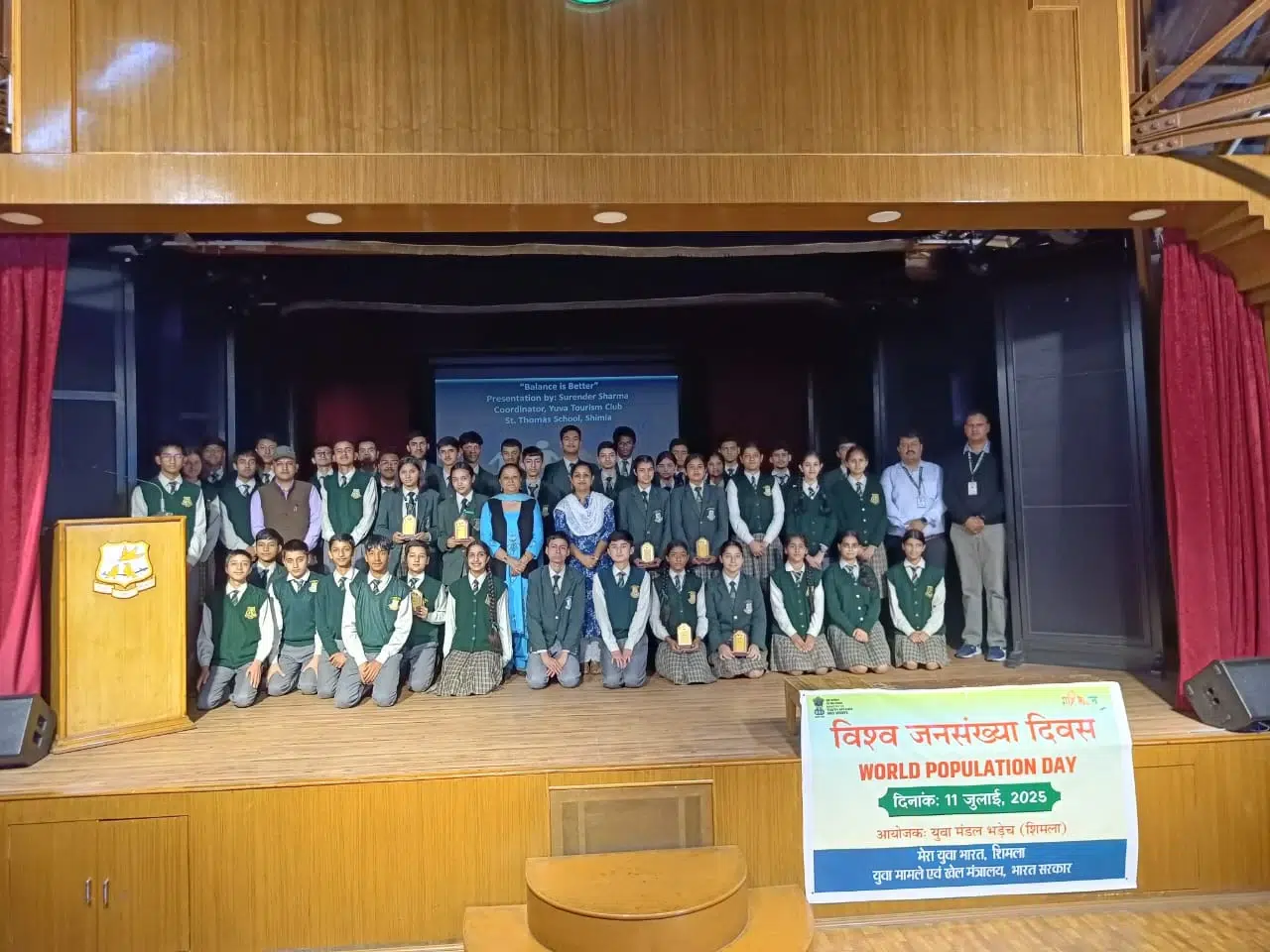PIL for carrying capacity : SC issues notice to Union & 13 Himalayan state & UTs
4 min read
The counsel for the petioner Advocate Akash Vishashtha told UNI that a Bench led by Chief Justice, D.Y. Chandrachud issued notices to the center and 13 Himalayan states on Writ Petition filed by Former IPS Officer, Dr. Ashok Kumar Raghav. PIL maintained that Tourist resort in Himalayan state have exceeded the carrying capacity direction in terms of tourists inflow, impact of tourism, vehicular traffic, scarcity of ground and surface water, availability of drinking water, water for sanitation, impact on air and water quality, impact on trees, forests, bio-diversity and wildlife, food supply etc .
PIL was filled before the apex court to issue mandamus direction to the Respondents to determine the Carrying Capacities above ecological factors in a period not exceeding six months to submit the Carrying Capacity reports. Petitioners further demanded that direction should be issued to Respondents to prepare Master Plans or Area Development Plans or Lay-out/Area Development or Zonal Plansb or Tourism Plans for all ecologically fragile area. Petition stated that that hill stations, highly visited areas and tourism destinations, even outside the purview of state urban planning and development laws.
He also sought that court prayed to issue direction, constituting an Indian Himalayan Region Monitoring Committee, as a permanent, working Regulatory body, with a multi-tier structural and functional framework, to be headed by a former Judge of this Court, to monitor all activities in the Indian Himalayan Region and to report to this Court on a periodic basis. PIL raised the issue of unregulated, unguided, unsustainable, environmentally, ecologically, geologically and hydrologically disastrous constructions inter alia of hotels, resorts, rest houses, home stays and other commercial accommodations, hydropower projects and unregulated tourism, tunneling, blasting of rocks or hills, along with the ancillary and incidental issues of massive, uncontrolled traffic volumes, air and water pollution, collapsing drainage and the waste management in the Indian Himalayan Region, spread across 13 States and UTs, namely, Uttarakhand, Himachal Pradesh, Jammu & Kashmir, Ladakh, West Bengal, Assam, Meghalaya, Manipur, Mizoram, Sikkim, Nagaland, Tripura and Arunachal Pradesh.
“These states and UTs are home to nearly 50 million people, due to the failure of the Central and state governments to assess the Carrying Capacity or Bearing Capacity of ecologically fragile areas, hill stations, hill towns, high-altitude areas and highly visited areas and the failure of the state governments in preparing and implementing the Master Plans and Tourism Plans etc. ” petitioner contended. The said Carrying or Bearing Capacity of the ecologically fragile areas, hill stations and highly visited areas in hills is necessary as the same would determine how much could a given place bear the load of human population or human intervention, given its geological, tectonic, seismic position, water resources available, food, habitat, air quality and other resources.
The Master Plans and Tourism Plans of the ecologically fragile areas, hill stations and highly visited areas in hills is also required so as to regulate and guide the extent, magnitude, nature and patterns of any form of development in the hilly areas. Due to non-existent Carrying bearing Capacity studies, grave geological hazards in the form of landslides, land subsidence, land cracking and sinking issues such as that in Joshimath are being witnessed and serious ecological and environmental depredation are taking place in the hills. Petitioner highlights that it was one of the primary reasons for the land sinking and subsidence, fissures and cracks in Joshimath, which have destroyed more than 800 structures and affected more than 3000 families houses therein, was uncontrolled construction and development of hydro power projects and hotels/resorts much in excess of the load that the area could bear. Had the Carrying Capacity of the area been determined earlier and adhered to by government agencies, the geological disaster of this size and magnitude could have been averted or minimized.
Apart from Joshimath, other hill stations such as Nainital, Mussoorie, Almora, Ranikhet, Mukteshwar, Auli, Badrinath, Kedarnath, Gangotri, Yamunotri, Pauri, Bageshwar, Kausani, Pithoragarh, Rishikesh, Chamba, Haridwar, Shimla, Narkanda, Chamba, Khajjiar, Dalhousie, Kasauli, Dharamshala, Manali, Solang valley, Koksar, Rohtang Glacier, Srinagar and Leh are witnessing unsustainable constructions, uncontrolled, unregulated tourism, tunneling, blasting of rocks or hills, drying up and elimination of water springs and other water resources, severe water scarcity, air and water pollution deforestation, massive waste generation and the management failure thereof, as no Carrying or Bearing capacities of such areas have ever been assessed. Petioners is a Fellow of the Royal Geogriphacical Society of London.The PIL was filed by one Dr Ashok Kumar Raghav resident of greater Noida (UP). The Petitioner was awarded a Ph.D. on “Environmental Impact Assessment (EIA) of Magnesite mining in Central Indian Himalayas”. Petitioner assisted in the enforcement of closure of calcium mines in Dehradun-Mussoorie area under the orders of Supreme court. The Petitioner was also conferred with Green award of Doon Ratna Series ‘Shivalik Ratan’ under the aegis of Uttarakhand Citizen Council for path-breaking research work on the Degradation of the Himalayan environment. The Petitioner has spent about 12 years in Uttarakhand and has worked in various capacities across the state and he always remained concerned with the ecology.





